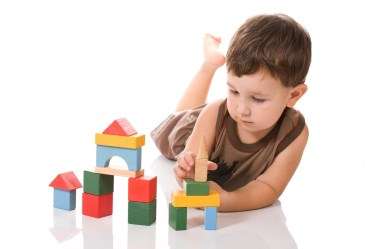Kindergarten Prep: I Am An Engineer

Kindergarten Prep: I Am An Engineer
Engineering may sound like a big word for early learning, but the planning, constructing, reconstructing, dismantling, and testing of how shapes and objects fit together or work together is something young children automatically do every day.
What Your Child Should Know
Your child should know:
- That she is capable of creating, building, and designing with simple to complex materials
- How to assemble and disassemble simple to complex puzzles, railroad tracks, blocks, and other toys or objects
- Basic differences among different kinds of lines, curves, and shapes
How You Can Help
Building your child's confidence and competence as a young engineer will require access to a variety of materials she can build with, manipulate, shape, put together, and take apart. Engineering materials can consist of storebought toys such as Legos, blocks, waffle blocks, puzzles, and magnetos, but engineering doesn't have to come in a box. Engineering opportunities exist through homemade or natural opportunities as well. Here are some examples of homemade and natural engineering projects.
- Cardboard boxes of all shapes and sizes create wonderful tools for engineering. Your child can stack the boxes, balance them, cut out and create buildings with them...the list goes on.
- Items from the kitchen such as straws and toothpicks make wonderful engineering tools. Your child can use the straws to make shapes or chains, or use the toothpicks to create designs, lines, and patterns. Tape a few paper towel tubes together and you will be able to construct tunnels for cars or marbles.
- Items from nature are also wonderful tools for engineering. Your child can build with sticks, create games with rocks, and turn a tree into a fort.
- Find simple objects around the house that your child can take apart and try to put back together again. The items can include a flashlight or an old toy that no one plays with anymore.
Remember that engineering is the process of building, designing, creating, and taking tools from the everyday world to see how your child can manipulate, take apart, and put the objects back together.
Reflect, Revise, Revisit
Observe your child's natural curiosity in objects around and outside the house. Use your observations to facilitate the engineering process and then use the process to facilitate new language through conversation and questions.